Filter by

Fracking the neighborhood :reluctant activists and natural gas drilling
When natural gas drilling moves into an urban or a suburban neighborhood, a two-hundred-foot-high drill appears on the other side of a back yard fence and diesel trucks clog a quiet two-lane residential street. Children seem to be having more than the usual number of nosebleeds. There are so many local cases of cancer that the elementary school starts a cancer support group. In this book, Jessi…
- Edition
- -
- ISBN/ISSN
- 9780262329798
- Collation
- 1 online resource (xiv, 191 pages).
- Series Title
- -
- Call Number
- -
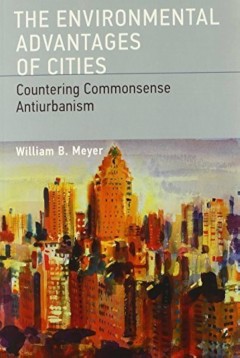
The Environmental Advantages of Cities: Countering Commonsense Antiurbanism
Conventional wisdom about the environmental impact of cities holds that urbanization and environmental quality are necessarily at odds. Cities are seen to be sites of ecological disruption, consuming a disproportionate share of natural resources, producing high levels of pollution, and concentrating harmful emissions precisely where the population is most concentrated. Cities appear to be parti…
- Edition
- -
- ISBN/ISSN
- 9780262314091
- Collation
- 1 online resource (ix, 234 pages) :illustrations, maps.
- Series Title
- -
- Call Number
- -
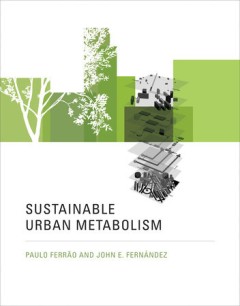
Sustainable Urban Metabolism
A unified framework for analyzing urban sustainability in terms of cities' inflows and outflows of matter and energy. Urbanization and globalization have shaped the last hundred years. These two dominant trends are mutually reinforcing: globalization links countries through the networked communications of urban hubs. The urban population now generates more than eighty percent of global GDP. Cit…
- Edition
- -
- ISBN/ISSN
- 9780262316958
- Collation
- 1 online resource (xiii, 244 pages) :illustrations
- Series Title
- -
- Call Number
- -
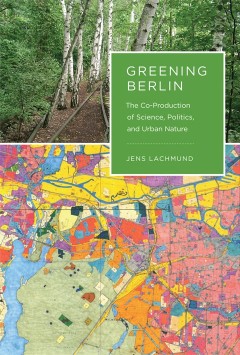
Greening Berlin :the co-production of science, politics, and urban nature
How plant and animal species conservation became part of urban planning in Berlin, and how the science of ecology contributed to this change.Although nature conservation has traditionally focused on the countryside, issues of biodiversity protection also appear on the political agendas of many cities. One of the emblematic examples of this now worldwide trend has been the German city of Berlin,…
- Edition
- -
- ISBN/ISSN
- 9780262312424
- Collation
- 1 online resource.
- Series Title
- -
- Call Number
- -
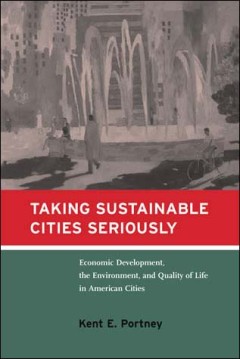
Taking Sustainable Cities Seriously: Economic Development, the Environment, a…
Today at least twenty-five major U.S. cities have pursued some form of sustainability initiative. Although many case studies and "how-to" manuals have been published, there has been little systematic comparison of these cities' programs and initiatives. In this book Kent Portney lays the theoretical groundwork for research on what works and what does not, and why. Distinguishing cities on the b…
- Edition
- -
- ISBN/ISSN
- 9780262281799
- Collation
- 1 online resource (xiv, 284 pages).
- Series Title
- -
- Call Number
- -
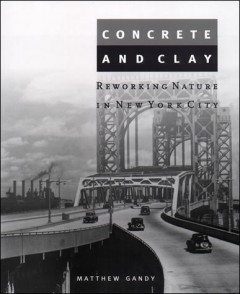
Concrete and Clay: Reworking Nature in New York City
An interdisciplinary account of the environmental history and changing landscape of New York City.In this innovative account of the urbanization of nature in New York City, Matthew Gandy explores how the raw materials of nature have been reworked to produce a "metropolitan nature" distinct from the forms of nature experienced by early settlers. The book traces five broad developments: the expan…
- Edition
- -
- ISBN/ISSN
- 9780262273442
- Collation
- 1 online resource (xi, 344 pages) :illustrations, maps.
- Series Title
- -
- Call Number
- -
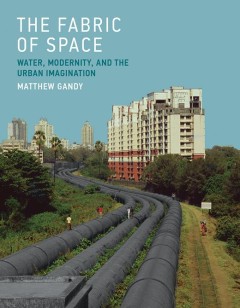
The fabric of space: Water, modernity, and the urban imagination
Water lies at the intersection of landscape and infrastructure, crossing between visible and invisible domains of urban space, in the tanks and buckets of the global South and the vast subterranean technological networks of the global North. In this book, Matthew Gandy considers the cultural and material significance of water through the experiences of six cities: Paris, Berlin, Lagos, Mumbai, …
- Edition
- -
- ISBN/ISSN
- 9780262321761
- Collation
- -
- Series Title
- -
- Call Number
- -
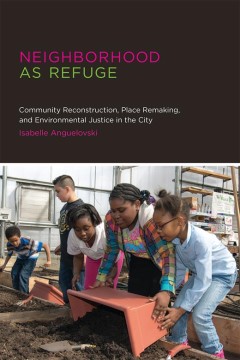
Neighborhood as refuge : community reconstruction, place remaking, and enviro…
Environmental justice as studied in a variety of disciplines is most often associated with redressing disproportionate exposure to pollution, contimination, and toxic sites. In this book, Isabelle Anguelovski takes a broader view of environmental justice, examining wide-ranging comprehensive efforts at neighbourhood environmental revitalization that include parks, urban agriculture, fresh food …
- Edition
- -
- ISBN/ISSN
- 9780262322188
- Collation
- 1 online resource (xiii, 276 pages) :illustrations, maps.
- Series Title
- -
- Call Number
- -
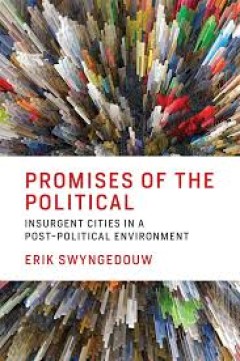
Promises of the political nsurgent cities in a post-political environment
The possibility of a new emancipatory and democratizing politics, explored through the lens of recent urban insurgencies . In Promises of the Political , Erik Swyngedouw explores whether progressive and emancipatory politics is still possible in a post-political era. Activists and scholars have developed the concept of post-politicization to describe the process by which "the political" is repl…
- Edition
- -
- ISBN/ISSN
- 9780262347471
- Collation
- 1 online resource (232 pages)
- Series Title
- -
- Call Number
- -
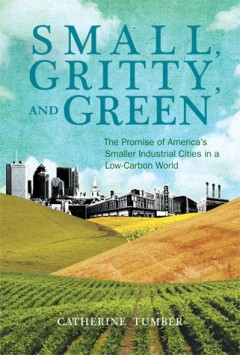
Small, Gritty, and Green: The Promise of America's Smaller Industrial Cities …
How small-to-midsize Rust Belt cities can play a crucial role in a low-carbon, sustainable, and relocalized future.OCLC-licensed vendor bibliographic record.
- Edition
- -
- ISBN/ISSN
- 9780262302708
- Collation
- 1 online resource (xxxiv, 211 pages) :illustrations.
- Series Title
- -
- Call Number
- -
 Computer Science, Information & General Works
Computer Science, Information & General Works  Philosophy & Psychology
Philosophy & Psychology  Religion
Religion  Social Sciences
Social Sciences  Language
Language  Pure Science
Pure Science  Applied Sciences
Applied Sciences  Art & Recreation
Art & Recreation  Literature
Literature  History & Geography
History & Geography